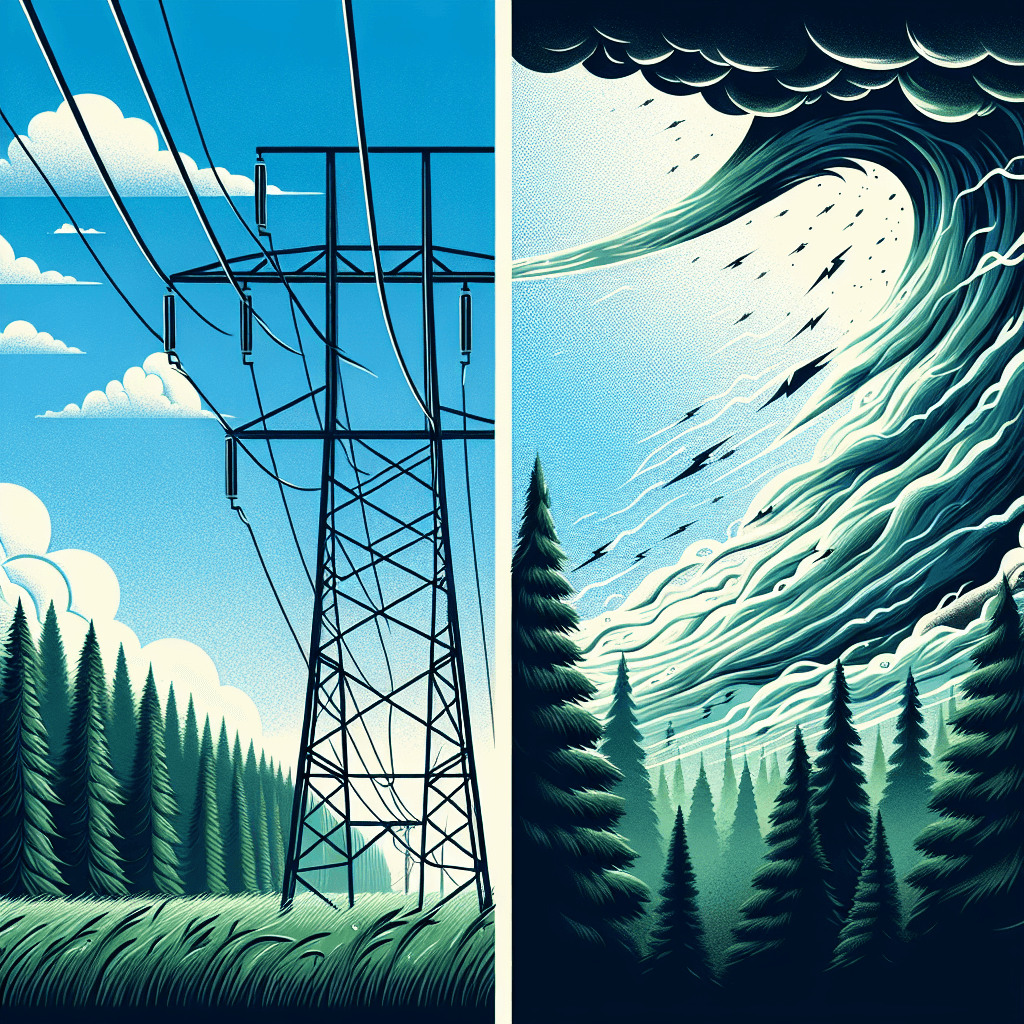Why does wind whistle past wires but just roar through trees
Discover the fascinating physics that makes the same gust of wind sing a pure, high-pitched note past a wire, yet only produce a chaotic roar as it tumbles through a forest of leaves.


Too Long; Didn't Read
TLDR: A wire's simple shape creates a single, organized sound wave from the wind, making a whistle. A tree's complex shape with countless branches and leaves creates a chaotic mix of many sounds at once, which we hear as a roar.
Decoding Nature's Orchestra: Why Does Wind Whistle Past Wires But Just Roar Through Trees?
Have you ever stopped on a blustery day and just listened? You might notice the wind doesn't make just one sound. It sings an eerie, high-pitched whistle as it passes a telephone wire, but through a forest, it creates a deep, powerful roar. These two distinct sounds, born from the same moving air, are not random acts of nature. They are a fascinating demonstration of physics in action, revealing how the shape and complexity of an object can completely transform the sound it produces. This blog post will delve into the science behind this natural orchestra, explaining the orderly physics of the whistle and the chaotic symphony of the roar.
The Secret of the Whistle: Vortex Shedding and Aeolian Tones
The distinct, often musical, hum or whistle you hear from power lines and wires on a windy day is a phenomenon known as an Aeolian tone. The name comes from Aeolus, the Greek god of the winds. This sound is not caused by the wire vibrating like a guitar string, but by the way the air itself moves around it.
When wind encounters a smooth, thin, cylindrical object like a wire, the airflow is disrupted. It cannot flow cleanly around both sides simultaneously. Instead, the air separates and creates a series of alternating, swirling eddies or whirlpools on the downwind side. This process is called vortex shedding.
Think of it as the air "peeling off" one side of the wire, then the other, in a perfectly regular, repeating pattern. Each time a vortex detaches, it creates a small change in pressure. This steady, rhythmic pulse of pressure changes generates sound waves at a very specific frequency. Our ears perceive this single, consistent frequency as a pure tone—a whistle. The pitch of this whistle is determined by two main factors:
- Wind Speed: The faster the wind blows, the faster the vortices are shed, resulting in a higher-pitched sound.
- Wire Diameter: Thinner wires produce higher-pitched whistles than thicker cables at the same wind speed.
This is why you might hear a chorus of different notes from a set of power lines with varying thicknesses. Each wire is playing its own unique Aeolian tone based on its size and its specific interaction with the wind.
The Roar of the Forest: The Complexity of White Noise
If a single wire is like a flute playing one clear note, a tree is like an entire orchestra playing every instrument at once. The deep, rushing roar of wind in a forest is a result of overwhelming complexity. Unlike a simple, uniform wire, a tree is a chaotic collection of surfaces.
When wind hits a tree, it interacts with:
- A thick, rough, and irregular trunk.
- Countless branches of different sizes, growing at different angles.
- Thousands of leaves, each with its own shape, size, and flexibility, all fluttering, twisting, and colliding.
Each of these components disrupts the airflow in its own unique way, creating its own set of vortices and sounds. The massive trunk produces low-frequency rumbles. The sturdy branches generate mid-range sounds. The rustling of innumerable leaves contributes a massive range of high-frequency hisses and whispers.
Instead of one single, repeating frequency, the tree produces a vast, chaotic jumble of countless different frequencies all at once. This acoustic mash-up is what scientists call broad-spectrum noise, which we perceive as a roar or a rush. There is no single, discernible pitch because every possible pitch is being generated simultaneously. It is the sound of chaos, where the wind's energy is scattered across the entire audible spectrum.
A Tale of Two Sounds: Uniformity vs. Complexity
The difference between the whistle and the roar boils down to a single principle: the orderliness of the object the wind is passing.
-
Wires (The Whistle):
- Object: Smooth, uniform, and simple.
- Airflow: Creates a regular, repeating pattern of vortices.
- Sound: A single, clear frequency (an Aeolian tone).
-
Trees (The Roar):
- Object: Complex, irregular, with countless components.
- Airflow: Creates a chaotic mix of vortices and vibrations.
- Sound: A combination of all frequencies (broad-spectrum noise).
Conclusion
The next time you find yourself caught in the wind, take a moment to appreciate the intricate physics at play. The haunting whistle from a nearby wire is the sound of order—a simple object creating a pure, predictable tone through the elegant dance of vortex shedding. In contrast, the mighty roar from a stand of trees is the sound of chaos—a complex system generating a rich, all-encompassing wall of noise. These everyday sounds are a powerful reminder that the world around us is a dynamic stage where the fundamental laws of nature are constantly performing, turning simple moving air into everything from a single note to a grand, sweeping symphony.
More Articles

Why do movie punches sound so much crunchier and louder than real ones?
That sickening, bone-crunching punch you hear in the movies is a lie, and the secret ingredient is probably sitting in your refrigerator right now.

What makes a beer bottle suddenly foam over just from a light tap on top?
It’s not magic, it’s a shockwave; discover the explosive physics that turns a gentle tap on your beer bottle into an instant foamy geyser.

Why do police officers touch the back of a car during a traffic stop?
It’s not a random habit; that simple touch is a calculated, old-school tactic designed to leave a crucial and potentially life-saving piece of evidence behind.